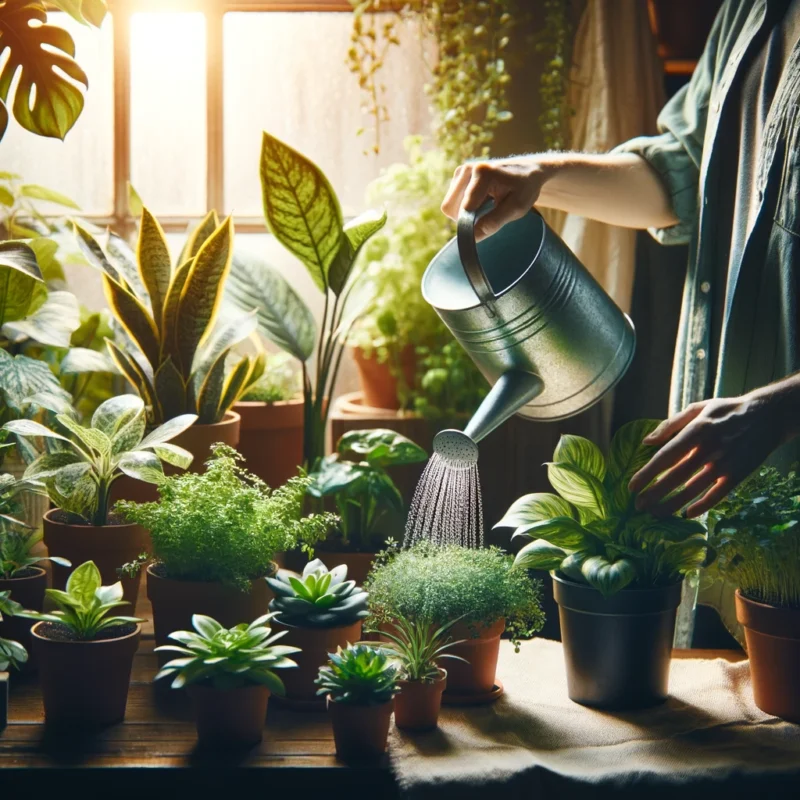Environment
How Often Should I Water My Plants?
The frequency of watering your indor plants can vary widely depending on several factors such as the stage of growth, the size of the plant, the size of the pot, the type of growing medium, the climate, and the environment (indoor vs. outdoor). However, there are some general guidelines you can follow to ensure your plants stay healthy:
-
Check the Soil Moisture: Before watering, check the top inch (2.5 cm) of the soil. If it feels dry to the touch, your plant likely needs water. If it still feels moist, you may want to wait a day or two. Overwatering can be just as harmful as underwatering, leading to issues like root rot.
-
Watering Seedlings: Seedlings have small root systems and require less water. Ensure the growing medium stays moist but not waterlogged. Watering small amounts frequently is better than large amounts less often.
-
Vegetative Stage: As plants grow larger, their water needs increase. The frequency might vary from every other day to every three days, depending on conditions. Always check the soil’s moisture level first.
-
Flowering Stage: Indoor plants usually require more water during the flowering stage, but again, this depends on many factors. The same method of checking the soil applies. Some growers find they need to water more frequently as plants reach full maturity.
-
Adjust for Environment: High temperatures and low humidity will increase water needs, while cooler, more humid conditions reduce them. Indoor plants typically require more careful monitoring as their environment is more controlled.
-
Consider the Pot Size and Type: Larger pots hold more moisture for longer periods, while smaller pots dry out faster. Also, fabric pots tend to allow soil to dry more quickly than plastic or ceramic pots due to better aeration.
-
Use of Nutrients: When feeding your plants nutrients, follow the recommended schedules and consider these as part of your watering routine. Nutrient solutions are typically applied during watering.
-
Monitoring Plant Health: Observing your plants is key. Signs of overwatering include droopy, yellowing leaves, while underwatered plants will look wilted and dry.
Finding the right balance requires attention and adjustments as your plants grow and as environmental conditions change. There’s no one-size-fits-all answer, but by paying close attention to your plants and their environment, you can develop a watering schedule that keeps them thriving.

